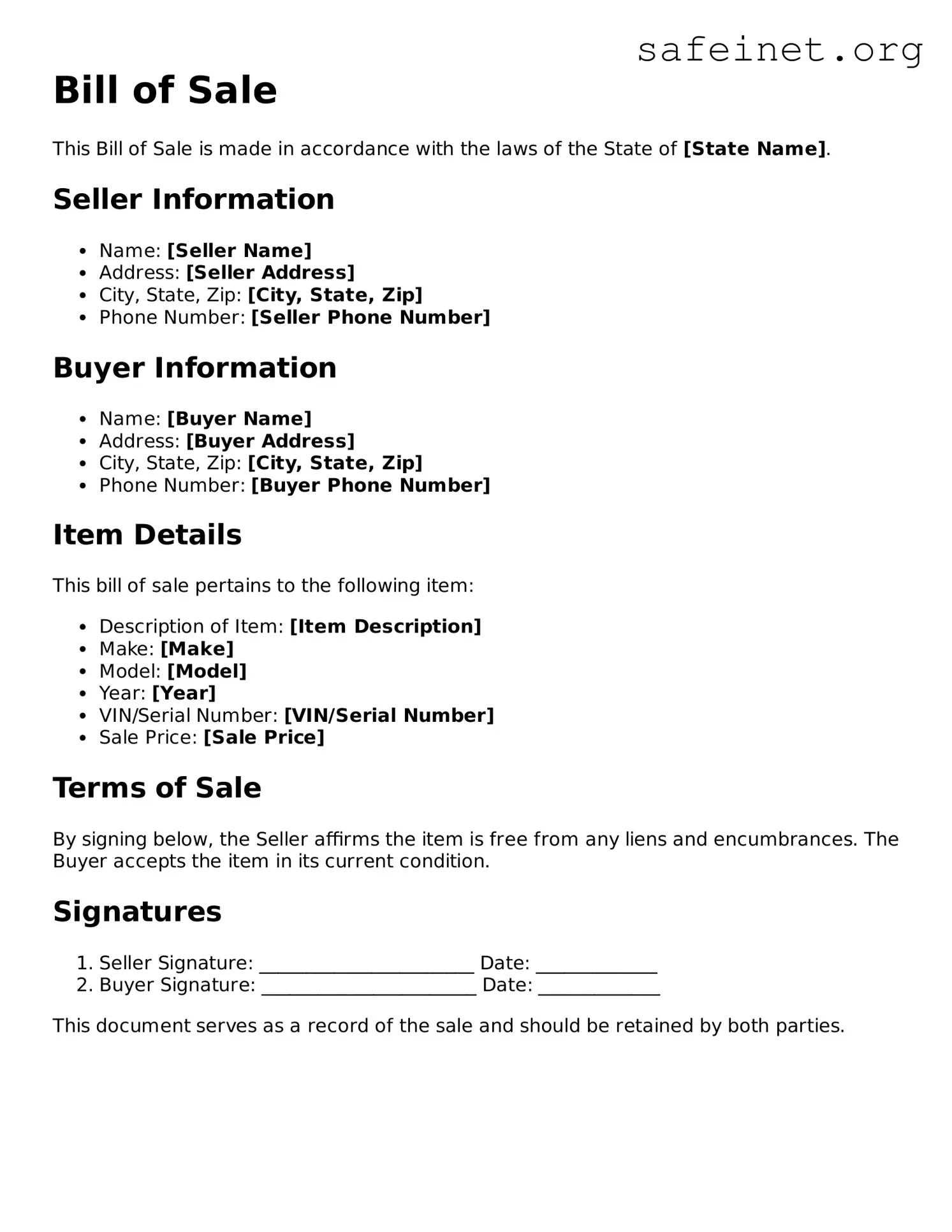What is a Bill of Sale?
A Bill of Sale is a legal document that records the transfer of ownership of an item from one party to another. This document serves as proof that a sale has occurred and outlines the details of the transaction, including the names of the buyer and seller, the date of the sale, a description of the item being sold, and the sale price. A Bill of Sale is commonly used for the sale of personal property, such as vehicles, furniture, and other tangible items.
Why is a Bill of Sale important?
The Bill of Sale is important for several reasons. First, it provides clarity and documentation of the transaction, which can help avoid disputes between the buyer and seller. It can also protect both parties by specifying the terms of the sale, including any warranties or conditions. Additionally, for items like vehicles, a Bill of Sale is often required to register the purchase with state authorities. It can serve as proof of ownership and may be necessary for tax purposes.
What information should be included in a Bill of Sale?
A comprehensive Bill of Sale should include several key pieces of information. It should start with the names and addresses of both the buyer and seller. The document should clearly describe the item being sold, including any pertinent details such as make, model, year, and VIN for vehicles. The sale price and payment method should be specified. Additionally, it's helpful to include the date of the transaction and any terms or conditions related to the sale. Signatures from both parties validate the document, making it legally binding.
Do I need to have a Bill of Sale notarized?
In most cases, a Bill of Sale does not need to be notarized to be valid. However, notarization can add an extra layer of security and authenticity to the document. Some states may have specific requirements for certain types of transactions, such as the sale of vehicles or real estate. It is advisable to check your state's laws to determine if notarization is required for your particular transaction.
